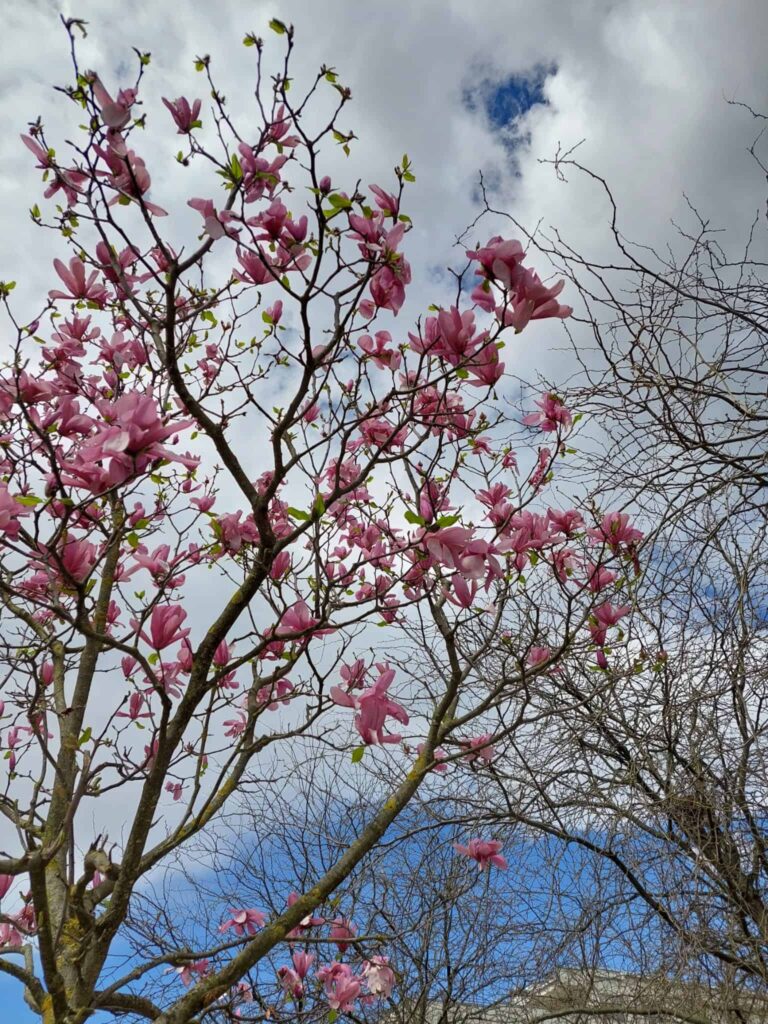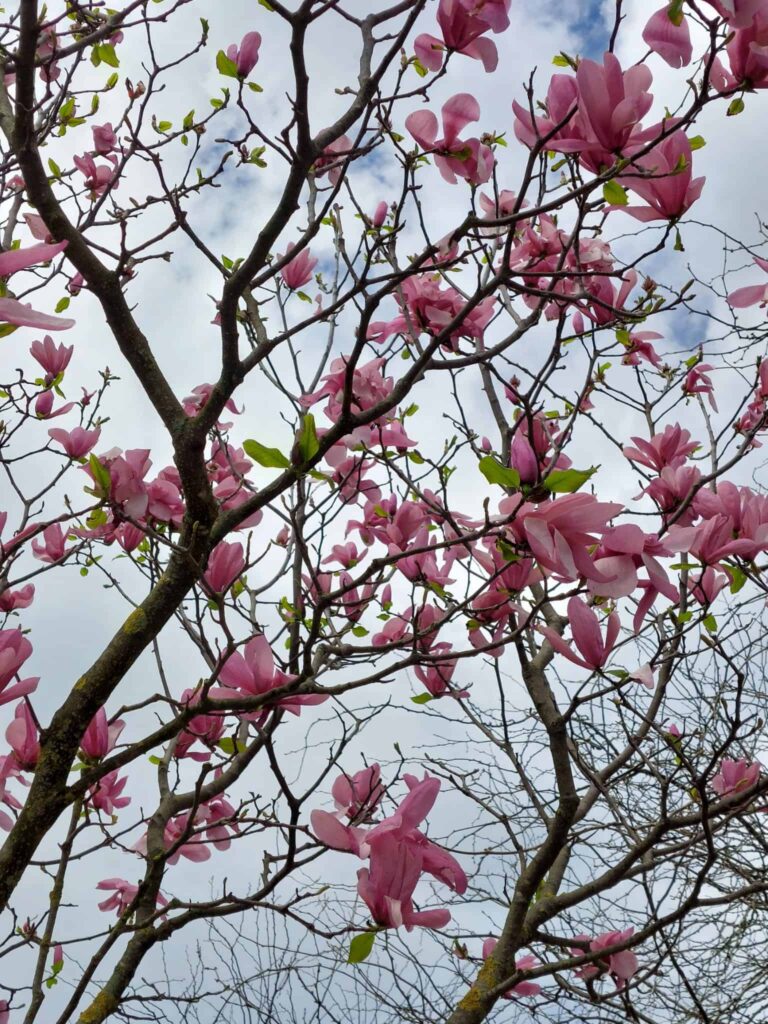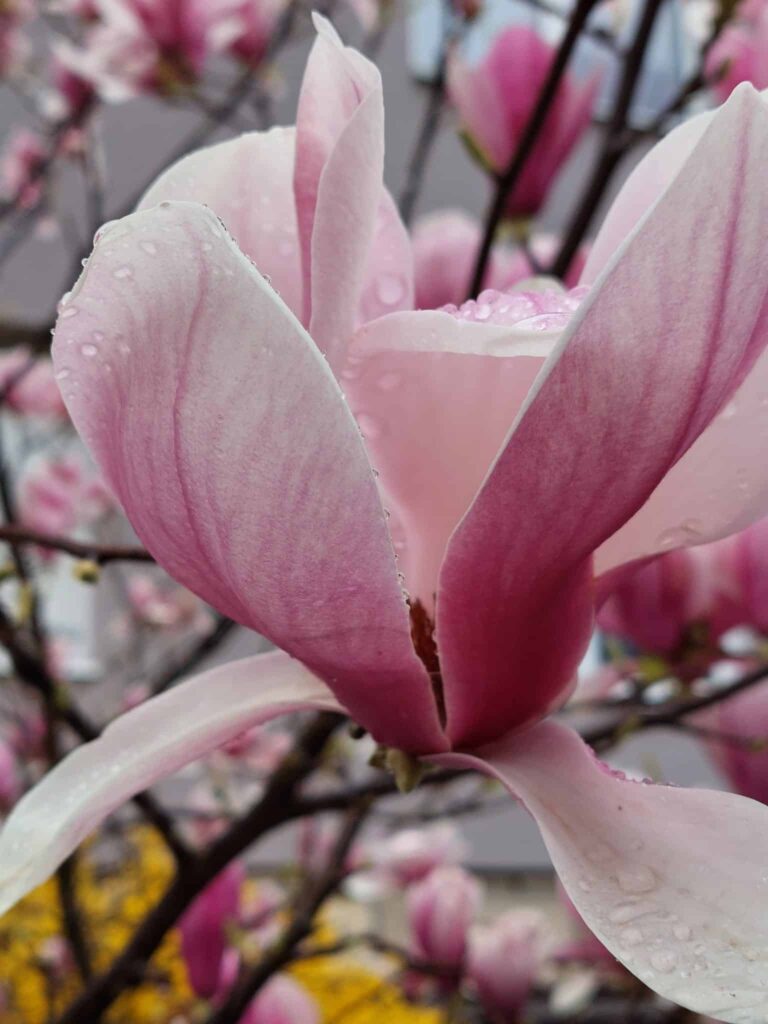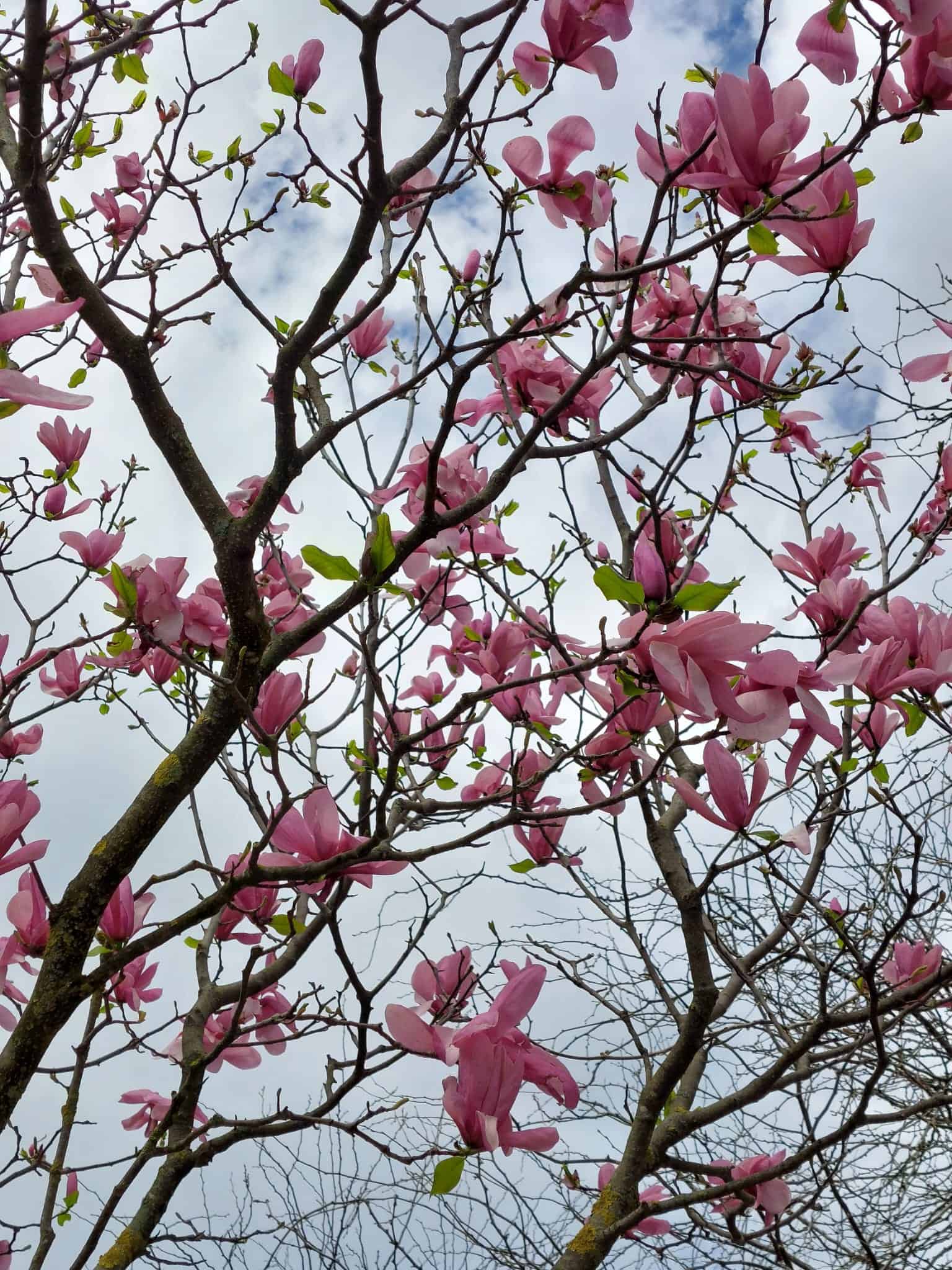


Botanical description
Magnolia officinalis is a deciduous tree native to China, belonging to the Magnoliaceae family. It typically grows between 20–25 meters tall and is characterised by large, broad leaves and fragrant white to creamy flowers that bloom in late spring. The bark of the tree is thick, smooth, and gray-brown, and it is highly valued for its medicinal properties.
The plant’s bark is harvested in the summer and dried for use in traditional and modern herbal medicine. Magnolia trees are widely appreciated for their ornamental beauty and powerful botanical compounds.
Habitat & cultivation
Magnolia officinalis thrives in warm, humid climates and is commonly found in forested mountain regions of central and southern China. It prefers well-drained, fertile soils and grows best in areas with full sun to partial shade.
The tree is cultivated for both medicinal use and ornamental purposes. Sustainable harvesting practices are recommended, as overharvesting of wild magnolia populations has led to conservation concerns in some regions.
Use for medicinal purposes
Magnolia officinalis bark has been used for centuries in Traditional Chinese Medicine (TCM) to promote digestive health, reduce stress, and support respiratory function. In modern herbal medicine, it is gaining recognition for its calming and adaptogenic properties, particularly its impact on mood, sleep, and metabolic regulation.
Traditional medicinal uses
Magnolia bark has been traditionally used for to treat include asthma, anxiety, depression, stomach disorders, and inflammation.
Constituents
- Honokiol
- Magnolol
- Lignans
- Essential oils
- Alkaloids
Action and application
The key bioactive compounds, honokiol and magnolol, exhibit strong anxiolytic, anti-inflammatory, antioxidant, and neuroprotective effects. They were first noted in plants of the Magnolia family, in teas (known as saiboku-to) used historically to treat asthma and anxiety.
Magnolia officinalis is commonly used in stress-relief formulations and supplements designed to support sleep, mood regulation, and metabolic balance. Its adaptogenic qualities make it a valuable addition to nootropic, weight management, and hormone-balancing products.
Caution
Despite a well-documented use of Magnolia in TCM and a wealth of in vitro and in vivo pharmacological studies, there are practically no clinical studies published in English. It is now necessary to establish suitable modern standards, techniques, and methods to evaluate the safety of such herbal products alone and in association.
TAXONOMY
KINGDOM: Plantae
ORDER: Magnoliales
FAMILY: Magnoliaceae
GENUS: Magnolia
SPECIES: Magnolia officinalis
COMMON NAMES
Magnolia bark, Hou Po (Chinese), Chinese magnolia, Magnoliae cortex
FLOWERING TIME
V–VI month
References:
Fujita, M., Itokawa, H., & Sashida, Y. (1973). Yakugaku zasshi : Journal of the Pharmaceutical Society of Japan, 93(4), 429–434. https://doi.org/10.1248/yakushi1947.93.4_429
Pandey, P.; Kumarihamy, M.; Chaturvedi, K.; Ibrahim, M.A.M.; Lambert, J.A.; Godfrey, M.; Doerksen, R.J.; Muhammad, I. In Vitro and In Silico Studies of Neolignans from Magnolia grandiflora L. Seeds against Human Cannabinoids and Opioid Receptors. Molecules 2023, 28, 1253. https://doi.org/10.3390/molecules28031253
Poivre, M., & Duez, P. (2017). Biological activity and toxicity of the Chinese herb Magnolia officinalis Rehder & E. Wilson (Houpo) and its constituents. Journal of Zhejiang University. Science. B, 18(3), 194–214. https://doi.org/10.1631/jzus.B1600299




